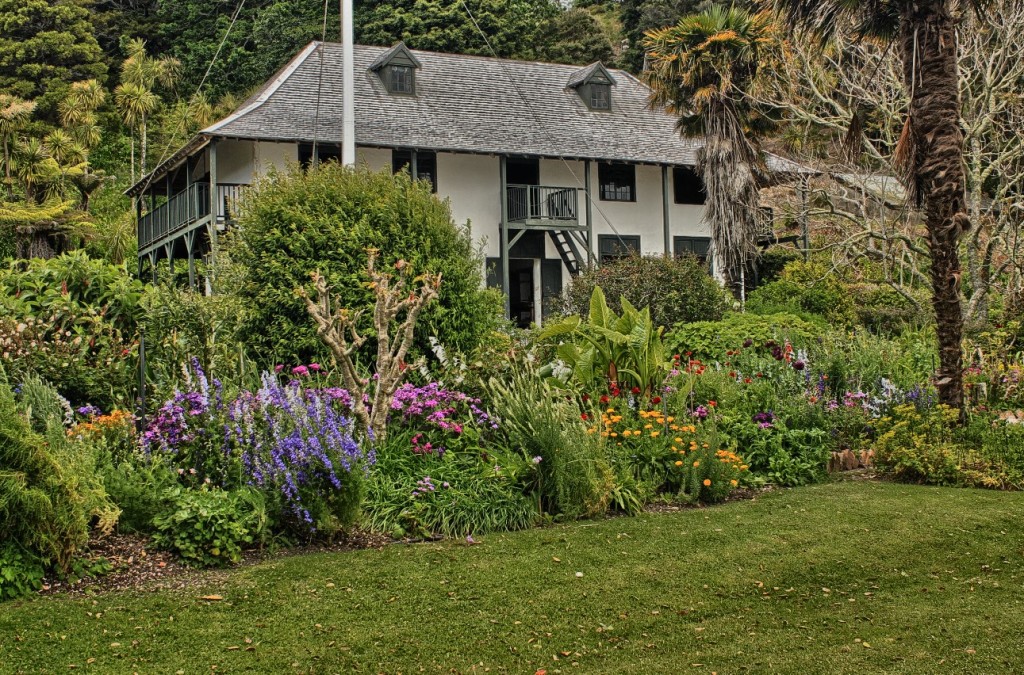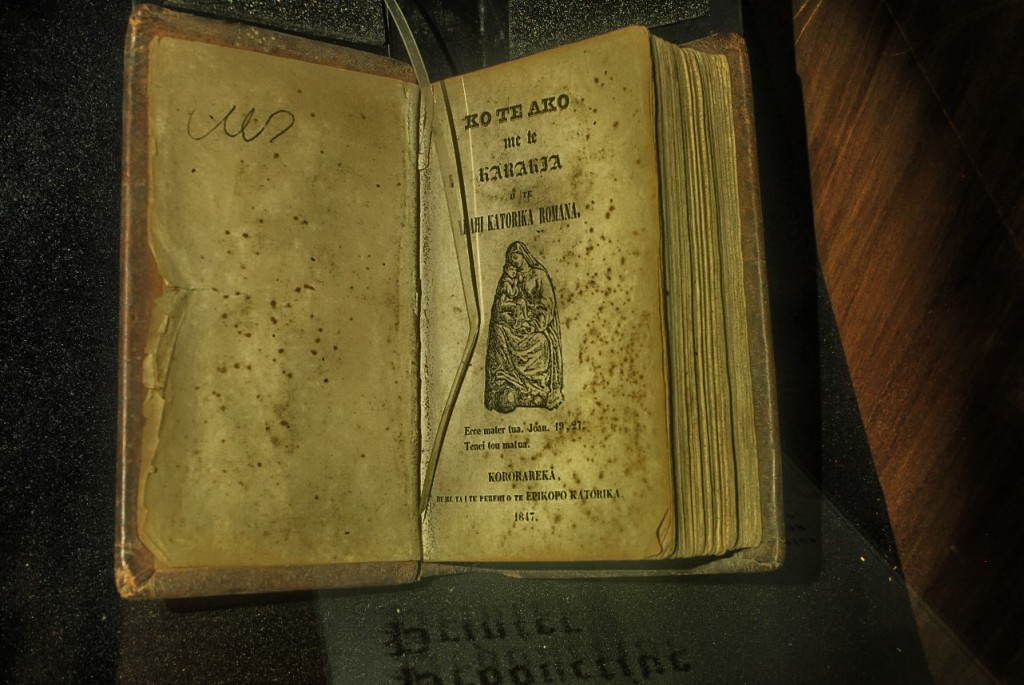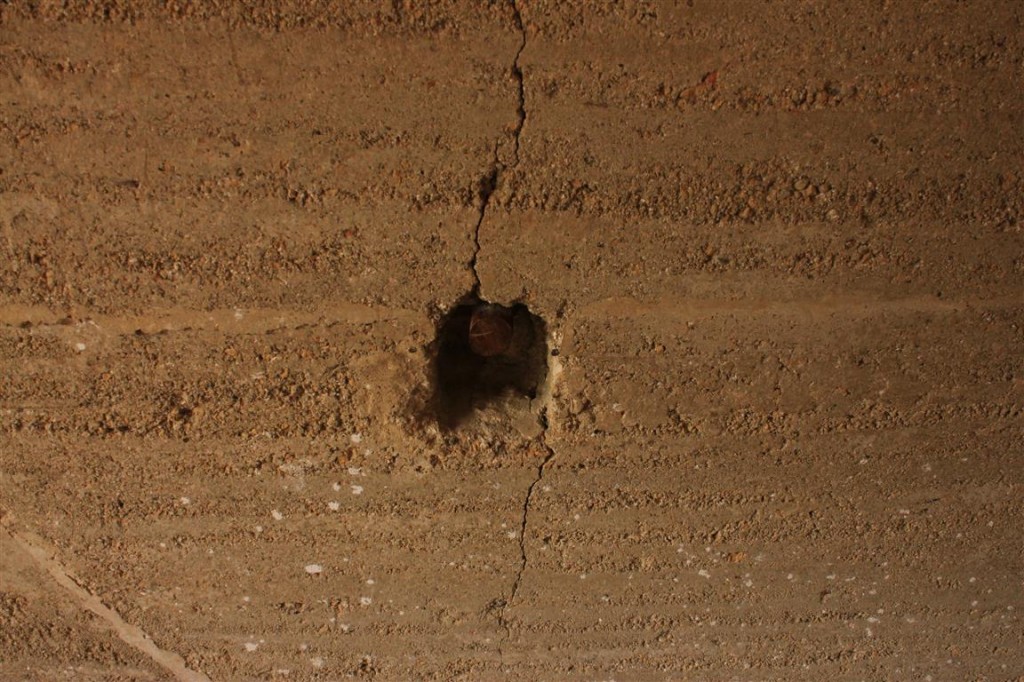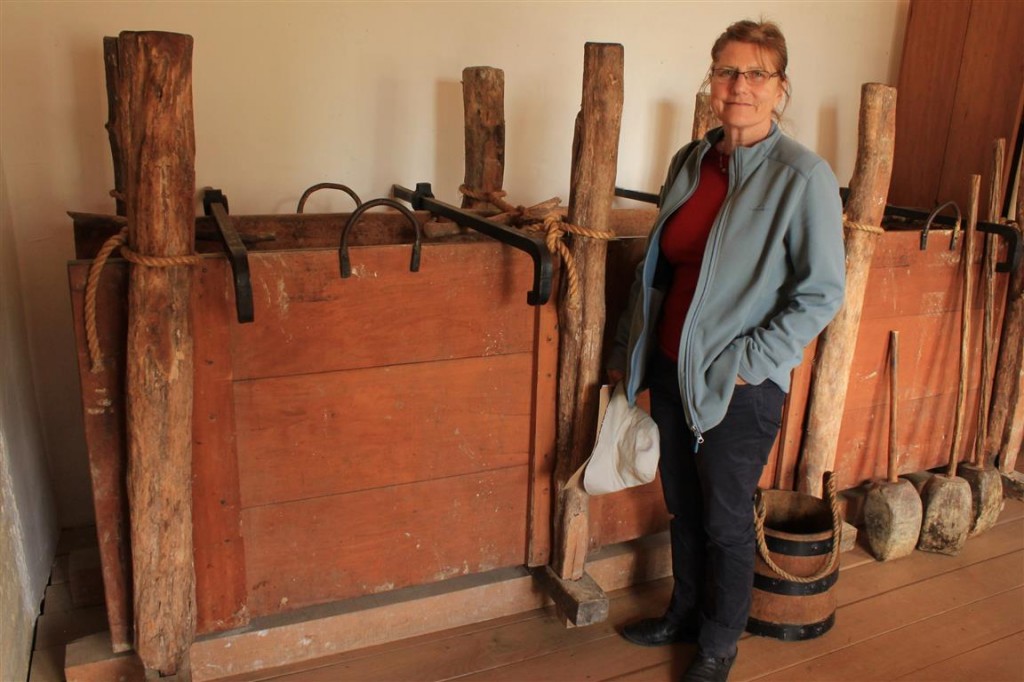While Russell was largely tourist oriented, we did find one remarkable building at the end of the beach which kept us occupied for the afternoon with its fascinating history. The building was the original house, the internal fittings had been reconstructed back to the mid 1800’s using where possible original equipment.

The story is that of the introduction of the Catholic religion into the Western Pacific. At the time there was no Catholicism preached in the islands, and the establishment of a British colony in New Zealand was seen by the Catholics as a useful base for spreading the word – or at least their version of it.
By 1842 the Protestants and Methodists had established themselves on the mainland and were spreading the word – or their version of it – among the Maori. Who were pretty sophisticated, and understood the value of learning. Many of the kids went to school, did homework, and were learning to speak English.
Russell was a hotbed of vice. Into which Bishop Pompallier came from France, intending to establish the headquarters of the Catholic Mission for the whole of the Western Pacific.
Well, as we all know the French are nothing but trouble. And the Catholics teach vile popery in their misguided worshop of the Lord. So the Protestants and the Methodists got themselves into a right conniption-fit about the arrival of the good Bishop. They wrote a tract denouncing Catholicism and the Bishop as the Arrival of the Antichrist, which they published and distributed among their flock. The British administration also send an urgent letter back to parliament in England notifying them of the invasion of the French, and opining that this was likely the thin end of the wedge, that soon they would all be eating baguettes and speaking French in NZ. Accordingly the Brits decided forthwith to get on with making the treaty of Waitangi with the Maoris – something they had been dragging their feet about in true bureaucratic fashion. After all who knows what Les Frogettes would do next.
So the treaty was signed, with the interference of Bishop P, who insisted on inserting a clause to the effect that all men were free to pursue their religion and customs in NZ (not something the Brits had thought of). Even today (the day before yesterday to be exact) they are arguing about what the treaty means. The Maoris have recently had a commission into the wording and decided that it was extremely unlikely they would have given away control of pretty well all of their lands to the Brits as part of the treaty. And they have a point, they were, after all, not crude savages at the time. The present government has not accepted that. They say why wouldn’t the Brits of yesteryear take over the whole thing – they did it everywhere else. No surprises there.
Anyway, Pompallier established this house and set up a printing press of his own to distribute the Catholic word according to the Pope. He had the smarts to print it all in Maori language, thus making it accessible to potential customers. All the printing materials, ink, paper, thread etc came from Europe by ship. Plus the metal to make the lettering – which incidentally was a precious metal of military significance since it could be melted down to make musket shot. During the years this house was operating as a press they make 38,000 books, all free, all in Maori language. A pretty impressive achievement.

Not that it was all fun for the workers. Those in the house had to work all daylight hours, little rest, lots of prayer, simple uncomfortable garments. They weren’t happy with this, but since it was all for the glory of God, what could they do.
The house is build of rammed earth, and the original formers are preserved for display. The walls show the pegs used to support the formers as they were moved higher with each layer of earth.
After some years Pompallier was sent elsewhere, eventually returning to France where he died in a paupers grave. Before he left Russell he donated the printing presses to the Maoris – they were eventually given back to the Pompallier house in the ’60s by the Queen of the Maoris. His bones were disinterred and buried in a proper grave.


